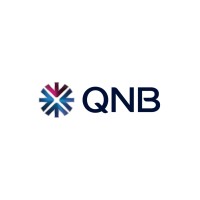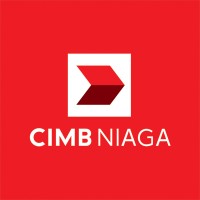
QNB Türkiye Company Cyber Security Posture
qnb.com.trFinansbank A.Ş. 26 Ekim 1987 tarihinde iş insanı Hüsnü Özyeğin liderliğinde 100 ortakla Bankalar Kanunu ve Türk Ticaret Kanunu hükümleri uyarınca kuruldu. Sektörde hızlı büyeme ile ilk 5 büyük özel banka arasına giren QNB Finansbank, 2006 yılında Yunanistan'ın en büyük bankası National Bank of Greece (NBG) tarafından satın alındı. Bu birleşme sonucunda NBG'nin Güneydoğu Avrupa'da sahip olduğu lider konumu ile bankanın Türkiye'deki yüksek büyüme potansiyeli bir araya geldi. 2006 yılından itibaren bireysel bankacılıkta da hızla büyüyen Finansbank; kredi kartı, dijitalleşme, teknoloji alanındaki yatırımları ve yarattığı çözümleri ile sektörde ilklere imza atan banka konumuna geldi. Ekim 2012'de tüm hizmetlerini sadece dijital kanallar üzerinden sunan ve Türkiye'nin ilk şubesiz dijital bankası olan Enpara.com'u kuran Finansbank, bu alanda Türkiye'de sektörde yeni bir dönemin kapılarını açtı. 2016 yılının haziran ayında Orta Doğu ve Afrika bölgesinin lider finansal kuruluşu olan Katar'ın en büyük bankası Qatar National Bank S.A.Q (QNB Group) tarafından satın alınan QNB Finansbank, uluslararası bir yapının parçası haline geldi. Böylelikle bankanın yeni ismi Ekim 2016 itibarıyla QNB Finansbank oldu. QNB Group'un, global bir marka olma vizyonu doğrultusunda ismini 2024 yılının Ekim ayı itibarıyla QNB Türkiye olarak yeniledi. QNB Türkiye, kurum kültürünü geleceğe taşıyan dinamik ve yenilikçi bir yapıya sahip. "Önce İnsan'' anlayışıyla çalışanların gelişimine öncelik veren banka, "Güven'' ile güçlü bir iş birliği ortamı kuruyor. Bankanın değerleri arasında yer alan "Adaptasyon'' ile değişimlere hızla uyum sağlarken, "Öncü Olmak'' vizyonuyla sektörde fark yaratıyor, "Birlikte Gelişim'' ilkesiyle de başarıya hep birlikte ulaşıyor. QNB Türkiye, çatısı altındaki iştirakleri QNB Leasing, QNB Invest, QNB Portföy, QNB Faktoring, QNB Sağlık, IBTech ve QNB eSolutions ile müşterilerinin tüm finansal ihtiyaçlarına yaratıcı, hızlı ve kolay çözümler sunmaya devam ediyor.
QNB Türkiye Company Details
qnbturkiye
12618 employees
276295.0
522
Banking
qnb.com.tr
Scan still pending
QNB_1017827
In-progress
Between 800 and 900
This score is AI-generated and less favored by cyber insurers, who prefer the TPRM score.
 QNB Türkiye Global Score
QNB Türkiye Global Score.png)

QNB Türkiye Company Scoring based on AI Models
| Model Name | Date | Description | Current Score Difference | Score |
|---|---|---|---|---|
| AVERAGE-Industry | 03-12-2025 | This score represents the average cybersecurity rating of companies already scanned within the same industry. It provides a benchmark to compare an individual company's security posture against its industry peers. | N/A | Between 800 and 900 |
QNB Türkiye Company Cyber Security News & History
| Entity | Type | Severity | Impact | Seen | Url ID | Details | View |
|---|---|---|---|---|---|---|---|
| QNB Group | Data Leak | 100 | 4 | 04/2016 | QNB1737271023 | Link | |
Rankiteo Explanation : Attack with significant impact with customers data leaksDescription: The Qatar National Bank suffered from a data breach incident after that a 1.5 GB archive containing 15,000 files was shared online. More than 15,000 files comprising banking data, QNB user profiles, credit card information, passwords, email addresses, physical locations, and phone numbers are among the data leak's contents. User profiles from banks and organisations are contained in one folder, and data from Al Jazeera employees is contained in another. In cooperation with all parties involved, QNB is looking into this subject further. | |||||||
| QNB Group | Data Leak | 85 | 3 | 05/2016 | QNB1656111123 | Link | |
Rankiteo Explanation : Attack with significant impact with internal employee data leaksDescription: The Qatar National Bank suffered from a potential data leak that exposed 15,000 files online. Over 15,000 files comprising banking data, QNB user profiles, credit card information, passwords, email addresses, physical locations, and phone numbers are among the data leak's contents. User profiles from banks and other organisations are contained in one folder, and data from Al Jazeera employees is contained in another. In cooperation with all relevant stakeholders, QNB is looking into this subject further. | |||||||
QNB Türkiye Company Subsidiaries

Finansbank A.Ş. 26 Ekim 1987 tarihinde iş insanı Hüsnü Özyeğin liderliğinde 100 ortakla Bankalar Kanunu ve Türk Ticaret Kanunu hükümleri uyarınca kuruldu. Sektörde hızlı büyeme ile ilk 5 büyük özel banka arasına giren QNB Finansbank, 2006 yılında Yunanistan'ın en büyük bankası National Bank of Greece (NBG) tarafından satın alındı. Bu birleşme sonucunda NBG'nin Güneydoğu Avrupa'da sahip olduğu lider konumu ile bankanın Türkiye'deki yüksek büyüme potansiyeli bir araya geldi. 2006 yılından itibaren bireysel bankacılıkta da hızla büyüyen Finansbank; kredi kartı, dijitalleşme, teknoloji alanındaki yatırımları ve yarattığı çözümleri ile sektörde ilklere imza atan banka konumuna geldi. Ekim 2012'de tüm hizmetlerini sadece dijital kanallar üzerinden sunan ve Türkiye'nin ilk şubesiz dijital bankası olan Enpara.com'u kuran Finansbank, bu alanda Türkiye'de sektörde yeni bir dönemin kapılarını açtı. 2016 yılının haziran ayında Orta Doğu ve Afrika bölgesinin lider finansal kuruluşu olan Katar'ın en büyük bankası Qatar National Bank S.A.Q (QNB Group) tarafından satın alınan QNB Finansbank, uluslararası bir yapının parçası haline geldi. Böylelikle bankanın yeni ismi Ekim 2016 itibarıyla QNB Finansbank oldu. QNB Group'un, global bir marka olma vizyonu doğrultusunda ismini 2024 yılının Ekim ayı itibarıyla QNB Türkiye olarak yeniledi. QNB Türkiye, kurum kültürünü geleceğe taşıyan dinamik ve yenilikçi bir yapıya sahip. "Önce İnsan'' anlayışıyla çalışanların gelişimine öncelik veren banka, "Güven'' ile güçlü bir iş birliği ortamı kuruyor. Bankanın değerleri arasında yer alan "Adaptasyon'' ile değişimlere hızla uyum sağlarken, "Öncü Olmak'' vizyonuyla sektörde fark yaratıyor, "Birlikte Gelişim'' ilkesiyle de başarıya hep birlikte ulaşıyor. QNB Türkiye, çatısı altındaki iştirakleri QNB Leasing, QNB Invest, QNB Portföy, QNB Faktoring, QNB Sağlık, IBTech ve QNB eSolutions ile müşterilerinin tüm finansal ihtiyaçlarına yaratıcı, hızlı ve kolay çözümler sunmaya devam ediyor.
Access Data Using Our API

Get company history
.png)
QNB Türkiye Cyber Security News
QNB Group: A year of achievements and global brand success| Gulf Times
QNB Group achieved yet another exceptional year of strategic growth and accomplishments across various fronts in 2024, solidifying its position ...
Turkish Hackers Claim Responsibility for Qatar National Bank Breach
Last week, reports of a breach on the Qatar National Bank (QNB) surfaced after troves of customer data were said to have been dumped online.
QNB Finansbank first in Turkey to launch digital signatures in branches
Turkey-based QNB Finansbank, a subsidiary of QNB Group and one of the top five privately owned banks in the country, has enabled its ...

QNB Türkiye Similar Companies

Crédit Agricole Personal Finance & Mobility
A major consumer credit provider in Europe, Crédit Agricole Consumer Finance operates in 19 countries. Its 9,900 employees support customers by providing the financing they need to undertake their projects. Reflecting the essential social and economic role of consumer credit, Crédit Agricole Consu

BMO U.S.
At BMO, banking is our personal commitment to helping people at every stage of their financial lives. The truth is, people’s needs change: so we change too. But we never change who we are. Which means we’ll never waiver from providing our customers the best possible banking experience in the indust

SEB
SEB is a leading northern European financial services group with a strong belief that entrepreneurial minds and innovative companies are key in creating a better world. SEB takes a long-term perspective and supports its customers in good times and bad. In Sweden and the Baltic countries, SEB offe

CIMB Niaga
CIMB Niaga was established as Bank Niaga in 1955. CIMB Group holds around 97.9% of the stakes in CIMB Niaga (including PT Commerce Kapital 1.02%). The Bank offers a comprehensive suite of both conventional and Islamic banking products and services, through an expanding delivery channel network of 91

Central Bank of Nigeria
The mandate of the Central Bank of Nigeria (CBN) is derived from the 1958 Act of Parliament, as amended in 1991, 1993,1997,1998,1999 and 2007. The CBN Act of 2007 of the Federal Republic of Nigeria charges the Bank with the overall control and administration of the monetary and financial sector pol

Industrial Bank of Korea
Established in 1961 under the Industrial Bank of Korea Act, Industrial Bank of Korea (IBK) is a leading financial institution dedicated to fostering the growth and development of small and medium-sized enterprises (SMEs) in South Korea. As a government-backed bank, IBK plays a vital role in the nati

Frequently Asked Questions
Explore insights on cybersecurity incidents, risk posture, and Rankiteo's assessments.
QNB Türkiye CyberSecurity History Information
How many cyber incidents has QNB Türkiye faced?
Total Incidents: According to Rankiteo, QNB Türkiye has faced 2 incidents in the past.
What types of cybersecurity incidents have occurred at QNB Türkiye?
Incident Types: The types of cybersecurity incidents that have occurred incidents Data Leak.
How does QNB Türkiye detect and respond to cybersecurity incidents?
Detection and Response: The company detects and responds to cybersecurity incidents through communication strategy with QNB is investigating this matter in cooperation with all relevant stakeholders..
Incident Details
Can you provide details on each incident?

Incident : Data Leak
Title: Qatar National Bank Data Leak
Description: The Qatar National Bank suffered from a potential data leak that exposed 15,000 files online. The leaked data includes banking data, QNB user profiles, credit card information, passwords, email addresses, physical locations, and phone numbers. User profiles from other banks and organizations, as well as data from Al Jazeera employees, were also exposed.
Type: Data Leak

Incident : Data Breach
Title: Qatar National Bank Data Breach
Description: The Qatar National Bank suffered from a data breach incident after a 1.5 GB archive containing 15,000 files was shared online. More than 15,000 files comprising banking data, QNB user profiles, credit card information, passwords, email addresses, physical locations, and phone numbers are among the data leak's contents. User profiles from banks and organisations are contained in one folder, and data from Al Jazeera employees is contained in another. In cooperation with all parties involved, QNB is looking into this subject further.
Type: Data Breach
What are the most common types of attacks the company has faced?
Common Attack Types: The most common types of attacks the company has faced is Data Leak.
Impact of the Incidents
What was the impact of each incident?

Incident : Data Leak QNB1656111123
Data Compromised: banking data, QNB user profiles, credit card information, passwords, email addresses, physical locations, phone numbers, Al Jazeera employee data

Incident : Data Breach QNB1737271023
Data Compromised: banking data, QNB user profiles, credit card information, passwords, email addresses, physical locations, phone numbers
What types of data are most commonly compromised in incidents?
Commonly Compromised Data Types: The types of data most commonly compromised in incidents are banking data, user profiles, credit card information, passwords, email addresses, physical locations, phone numbers, banking data, QNB user profiles, credit card information, passwords, email addresses, physical locations and phone numbers.
Which entities were affected by each incident?

Incident : Data Leak QNB1656111123
Entity Type: Financial Institution
Industry: Banking
Location: Qatar
Response to the Incidents
What measures were taken in response to each incident?

Incident : Data Leak QNB1656111123
Communication Strategy: QNB is investigating this matter in cooperation with all relevant stakeholders.
Data Breach Information
What type of data was compromised in each breach?

Incident : Data Leak QNB1656111123
Type of Data Compromised: banking data, user profiles, credit card information, passwords, email addresses, physical locations, phone numbers
Number of Records Exposed: 15000
Sensitivity of Data: High
Personally Identifiable Information: email addresses, physical locations, phone numbers

Incident : Data Breach QNB1737271023
Type of Data Compromised: banking data, QNB user profiles, credit card information, passwords, email addresses, physical locations, phone numbers
Number of Records Exposed: 15000
Sensitivity of Data: High
Data Exfiltration: True
Personally Identifiable Information: True
Investigation Status
What is the current status of the investigation for each incident?

Incident : Data Leak QNB1656111123
Investigation Status: Investigating

Incident : Data Breach QNB1737271023
Investigation Status: Investigation ongoing
How does the company communicate the status of incident investigations to stakeholders?
Communication of Investigation Status: The company communicates the status of incident investigations to stakeholders through was QNB is investigating this matter in cooperation with all relevant stakeholders..
Additional Questions
Impact of the Incidents
What was the most significant data compromised in an incident?
Most Significant Data Compromised: The most significant data compromised in an incident were banking data, QNB user profiles, credit card information, passwords, email addresses, physical locations, phone numbers, Al Jazeera employee data, banking data, QNB user profiles, credit card information, passwords, email addresses, physical locations and phone numbers.
Data Breach Information
What was the most sensitive data compromised in a breach?
Most Sensitive Data Compromised: The most sensitive data compromised in a breach were banking data, QNB user profiles, credit card information, passwords, email addresses, physical locations, phone numbers, Al Jazeera employee data, banking data, QNB user profiles, credit card information, passwords, email addresses, physical locations and phone numbers.
What was the number of records exposed in the most significant breach?
Number of Records Exposed in Most Significant Breach: The number of records exposed in the most significant breach was 300.0.
Investigation Status
What is the current status of the most recent investigation?
Current Status of Most Recent Investigation: The current status of the most recent investigation is Investigating.
What Do We Measure?
















Every week, Rankiteo analyzes billions of signals to give organizations a sharper, faster view of emerging risks. With deeper, more actionable intelligence at their fingertips, security teams can outpace threat actors, respond instantly to Zero-Day attacks, and dramatically shrink their risk exposure window.
These are some of the factors we use to calculate the overall score:
Identify exposed access points, detect misconfigured SSL certificates, and uncover vulnerabilities across the network infrastructure.
Gain visibility into the software components used within an organization to detect vulnerabilities, manage risk, and ensure supply chain security.
Monitor and manage all IT assets and their configurations to ensure accurate, real-time visibility across the company's technology environment.
Leverage real-time insights on active threats, malware campaigns, and emerging vulnerabilities to proactively defend against evolving cyberattacks.




